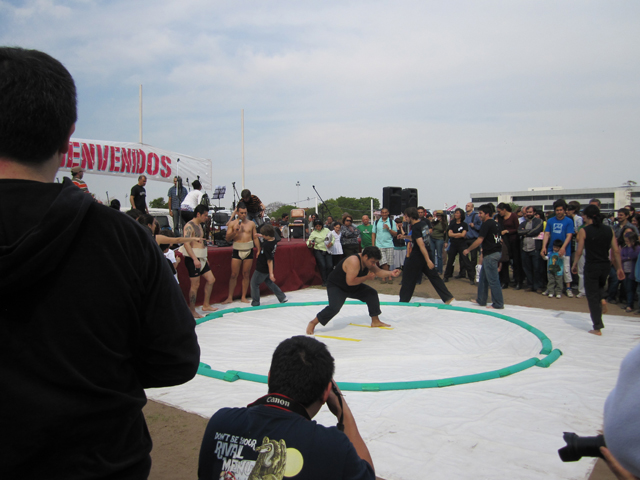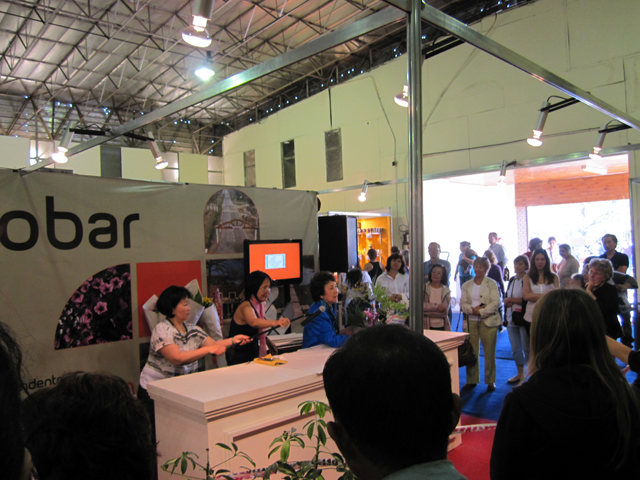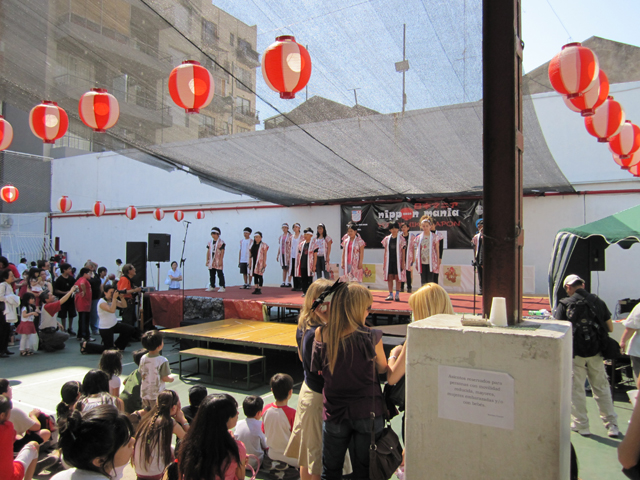Until the Japanese Become the Argentines
My research theme is anthropological research on the birth and dynamism of the nikkei (Japanese-descended) category. In the context of Ars Vivendi where people conduct research on disabilities, aging, illness, and differences, it fits with differences. This time let me talk about the nikkei community in Argentina.
On March 18, one week after the Great East Japan Earthquake, volunteers of the nikkei community in Argentina gathered in the Republic Square and made a video in order to send cheers to Japan that has been hit by the earthquake, tsunami and nuclear accidents. According to its inaugural members, they thought that they would like to encourage people in Japan by sending their feelings since donation and relief goods did not reach Japan soon (later other nikkei groups conducted this kind of activity and collected donation).
Argentina is a country that was established by immigrants mainly from Europe and even now white people occupy most of its population. While in Japan it is not well-known that tens of thousands of Japanese immigrants and their children (the nikkei people) live there, in Argentina, except for some areas the nikkei people have little presence among all minority groups, either. This situation may be natural since its number is not large compared with the nikkei people in Brazil, and there has appeared no nikkei president so far as in Peru.
However, the situation has been changing little by little. One reason is that Japan and Japanese things have become closer to the Argentine society (especially Buenos Aires).They have been interested not only in the Japanese traditional culture, such as kendo, judo, Japanese flower arrangement, Japanese Calligraphy, Japanese tea ceremony and drums since 1980s, but in animation, TV dramas and J-pop music etc.
Another reason is the change of the Nikkei society itself. From the beginning of the twentieth century through the present, Japanese people in Argentina have conducted activities by establishing Japanese communities, associations of people from certain prefectures and so on. However, the purpose in most cases was mutual aid for Japanese people—only Japanese people were there and their language was Japanese. In other words, it can be said that there was another Japanese society in the Argentine society. However, a little while later after the war, as a result of increase of the number of people who were not able to use Japanese, there appeared a generation that felt the impossibility of achieving a balance between Japan and Argentina and was torn between them. I believe this is the first sign that the Japanese community was melting into the Argentine society. It is around 1960s to 1980s, when this generation became majority that the self-styled “nikkei” became established.
These situational changes have made events that were once held for the nikkei society open to the general Argentina little by little recently and I think that the barriers that surround the “nikkei society” are getting lower and lower. Japanese-style annual events such as Matsuri in October and Bon-Odori in January, and bazaars each Japanese community in Argentina holds every year have been popular among European Argentines (the nikkei people call them “gaijin,” which means foreigners) in some regions and the number of gaijin visitors is larger than that of the nikkei people.
The movement of supporting Japan after the earthquake, which I introduced at the beginning, was not actually made only by the nikkei people. The look of people that gathered in the square was different from the image I had as the “event for the nikkei people”. It was probably the gathering that included students who learned Japanese, the relatives of the nikkei people, people who had Japanese friends, and other “ordinary” Argentines. And the distinction between the nikkei people and others did not probably have meaning very much. What kinds of people's experiences have made the current nikkei society? If this question is posed, I think that the time of people a generation ago who worried “the two worlds” means much as a step of the history of the nikkei society.














